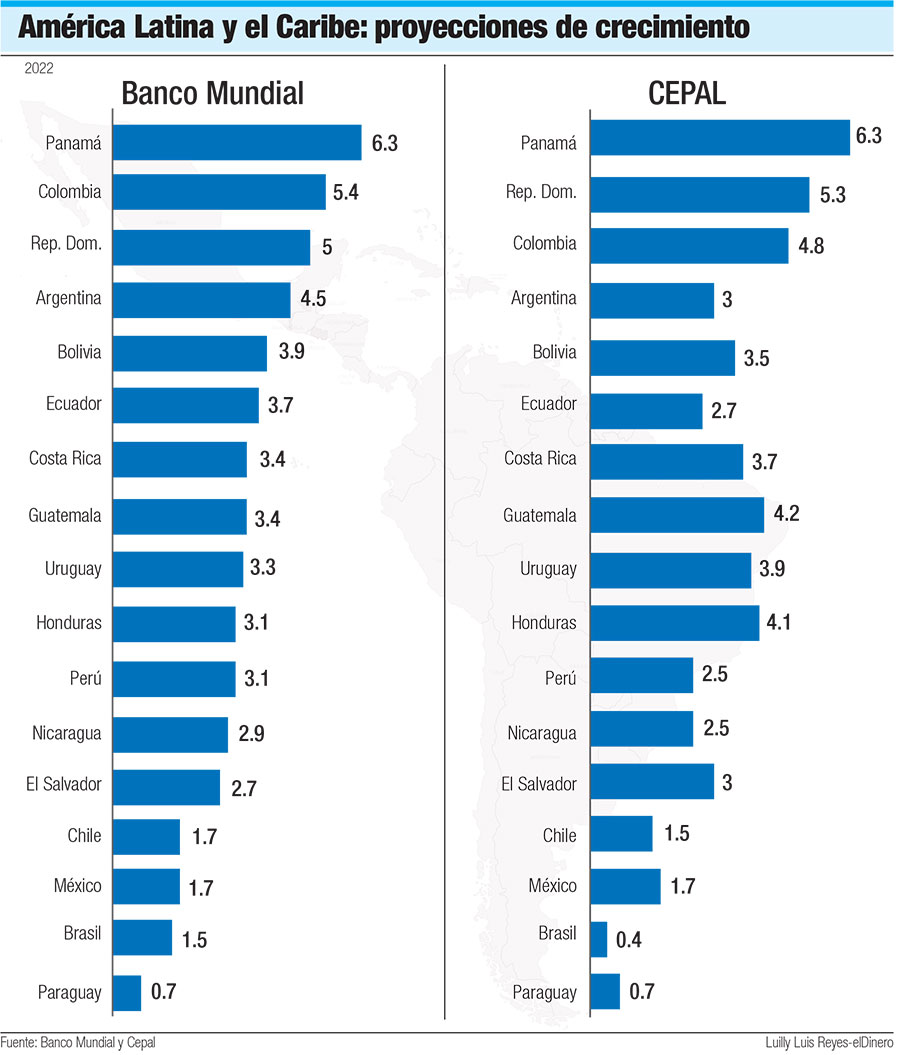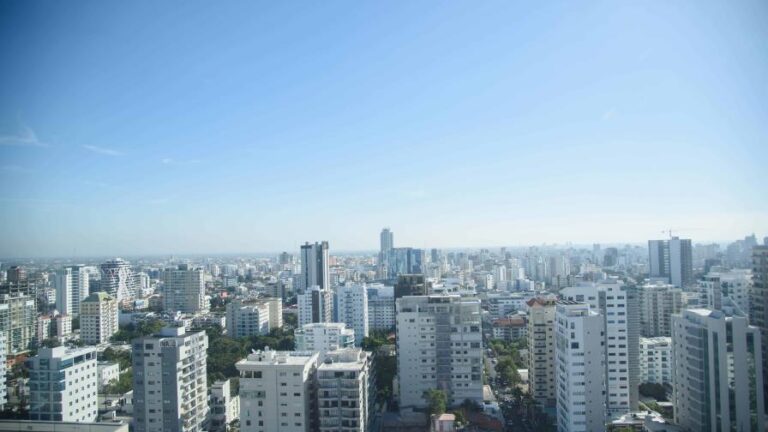With a war as a backdrop, skyrocketing inflation in the leading role and fast-escalating interest rates as a plot, the film portraying Latin America appears to be complex. Although the region’s financial markets showed resilience at the beginning of the year, the situation tightened in April, something that changed the economic growth forecast.
As in the rest of the world, inflationary dynamics in Latin America and the Caribbean have accelerated, warns the Economic Commission for Latin America and the Caribbean (ECLAC). This is aggravated by the war between Russia and Ukraine, which led to new uncertainties for the global economy and is negatively affecting overall growth.
In its latest report, the World Bank forecasts that regional development will decelerate sharply to 2.5% in 2022, following a post-pandemic rebound of 6.7% in 2021. Although it is a “negative” forecast, it looks “better” than predicted a few months ago, when growth was placed at 2.3% for this year.

With that outlook, regional gross domestic product (GDP) was expected to grow 2.2% more in 2023, however, now growth will slow further to just 1.9%, before rebounding slightly to 2.4% in 2024. These results are among the lowest in the world, warns the entity.
Inflation
In addition to causing lower expected growth for Latin American and Caribbean economies, the war between Russia and Ukraine will cause a slow recovery in employment and higher inflation. The latter rose above central bank targets in many countries.
Overall measures to deal with inflation as well as food and fuel prices accelerated. As of March 2022, regional inflation is estimated at 7.5%, and according to ECLAC, many financial institutions in the region anticipate that it will remain high in the remainder of the year.
In response, monetary authorities raised interest rates in many cases indicating that further increases will occur. In the case of the Dominican Republic, experts explain that it is not a cause for concern. The monetary policy of the region’s central banks became more restrictive and, in some countries, reached levels similar to those seen in 2017.
Growth
Despite the forecasts, Panama (with a projected growth of 6.3%), Colombia and the Dominican Republic are the three countries with the best prospects for GDP growth for this year, according to the World Bank. ECLAC believes the DR will have the second highest growth in 2022, reaching 5.3%.
The least favored are Mexico and Chile (both with an estimated growth of only 1.7%), followed by Brazil and Paraguay, while Haiti is the only country in the region that will see an economic shrinkage of -0.4%.
According to the most recent estimates provided by ECLAC, an average growth of 1.8% is expected for the region. South American economies will grow by 1.5%, those of Central America plus Mexico by 2.3%, and those of the Caribbean will grow by 4.7% (excluding Guyana).
This is because the prices of Latin America and the Caribbean’s main exports will be substantially higher in 2022. That is, the export earnings and fiscal position of some countries producing regional basic inputs are benefiting, but the positive economic effects will be offset by rising consumer prices and rising domestic and global interest rates.
It also adds that fiscal and monetary policies will be broadly based on short-term growth, as monetary authorities tighten policies to combat inflation and the withdrawal of pandemic-related fiscal support continues.
The World Bank adds that a slow response in the production of some commodities and rising costs of energy and fertilizers would also affect the region’s growth. ECLAC, for its part, warns of slower than expected growth in Latin America’s and the Caribbean’s main trading partners. This would further weaken regional prospects.
Added to all of the above is the global shortage of fertilizers linked to the war in Ukraine that will cause food prices to rise, warns the World Bank.
Furthermore, inflation could remain above the norm, which would require faster monetary tightening, and could trigger an even steeper regional slowdown.
Source:
El Dinero



